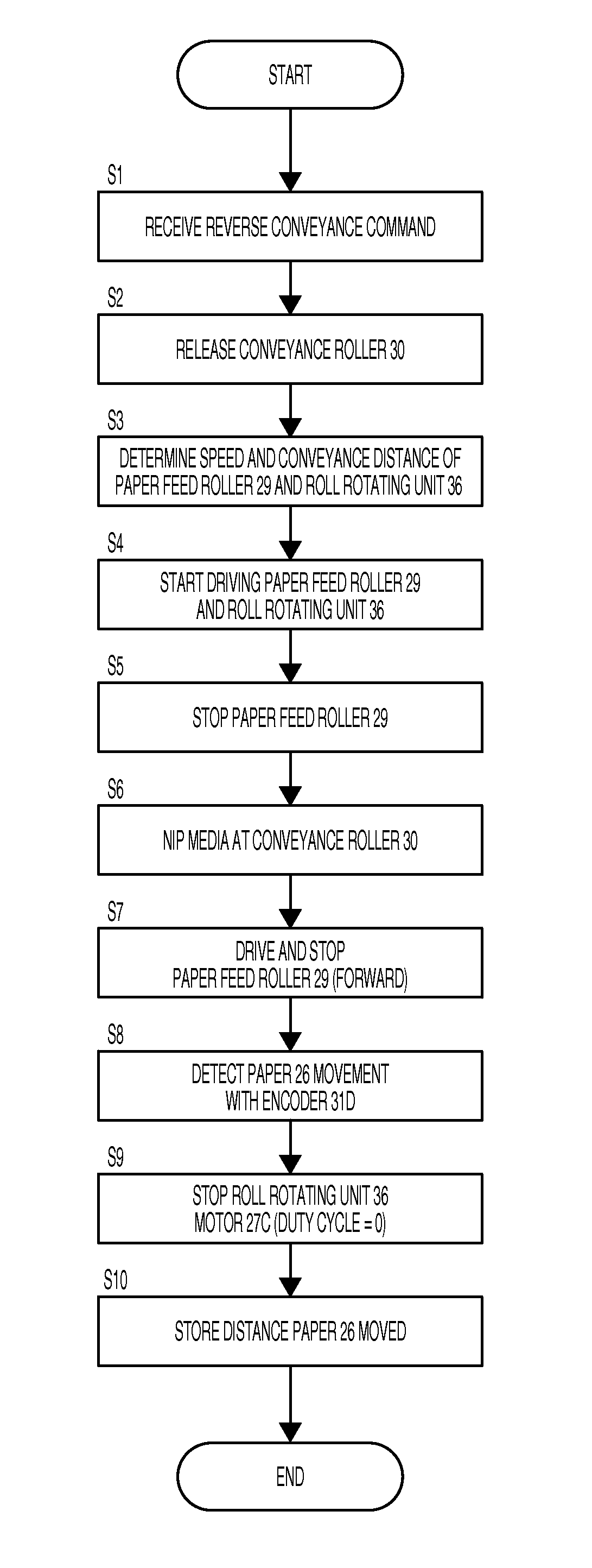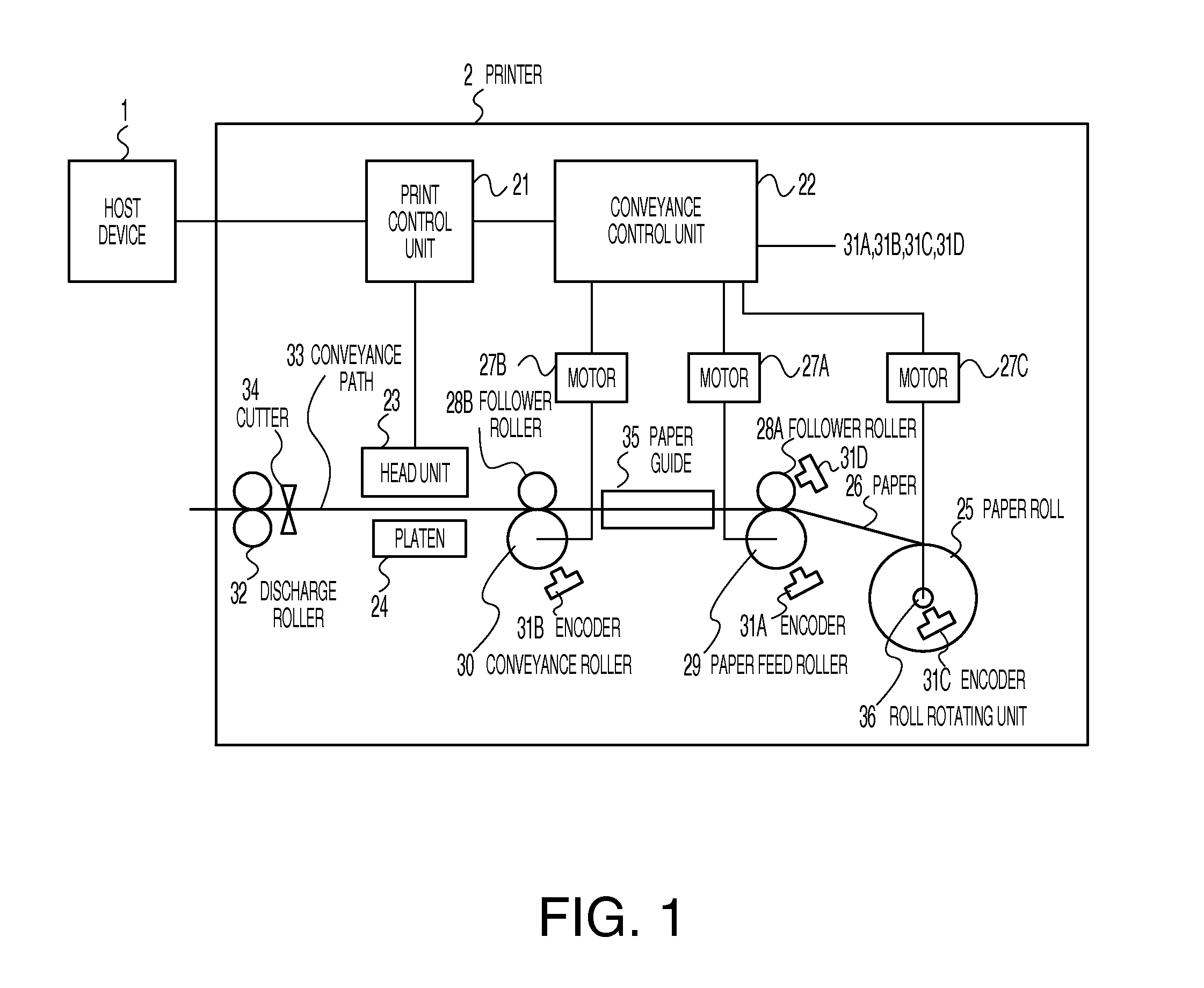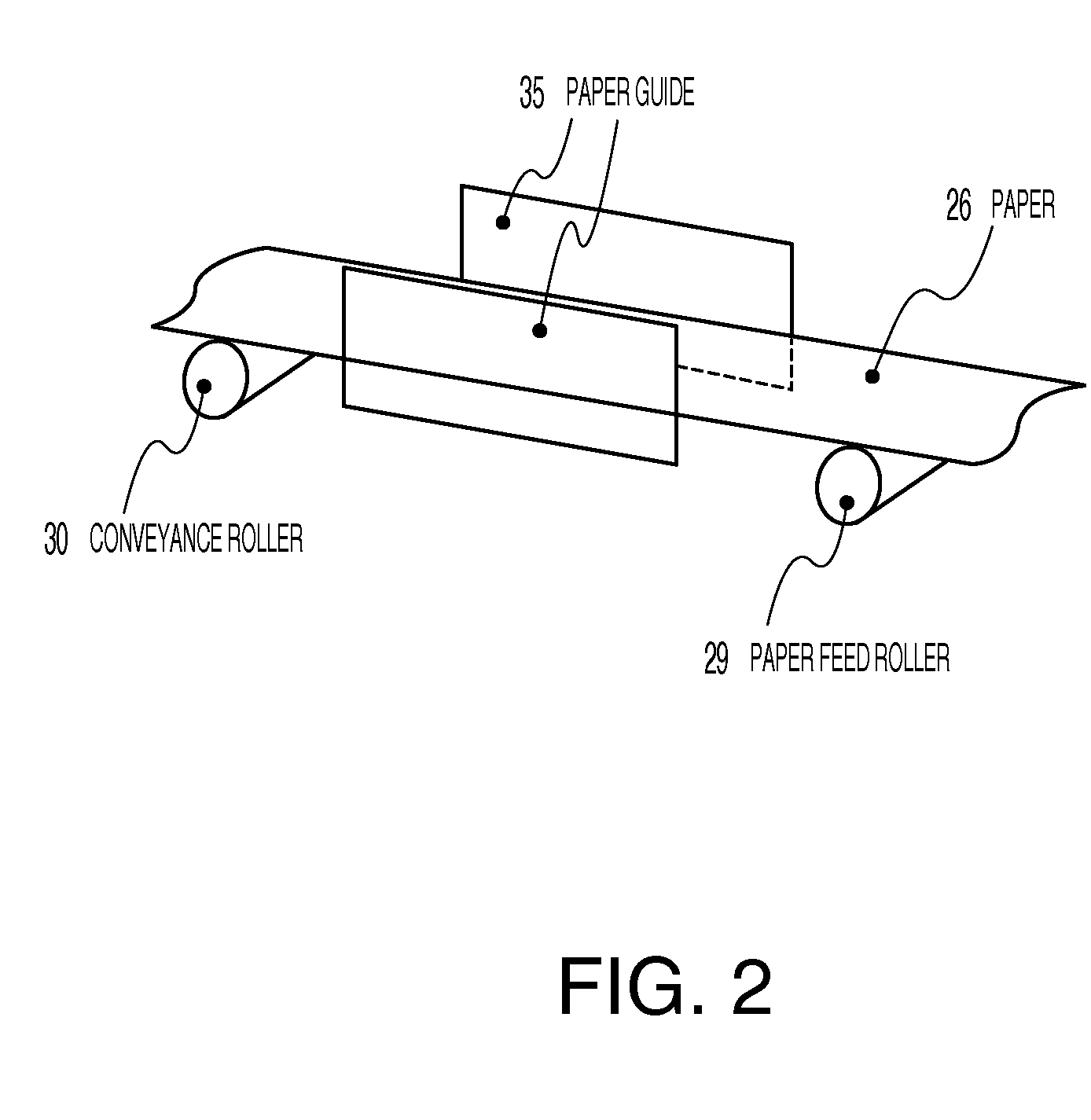Media conveyance device, printing device, and media conveyance method
a technology of media conveyance and printing device, applied in the field of media conveyance devices, can solve the problems of increasing the time or distance needed to stop, affecting the speed of the speed of the speed of the speed of the speed of the speed of the speed of the speed of the speed of the speed of the speed of the speed of the speed of the speed of the speed of the speed of the speed of the speed of the speed of the speed of the speed of the speed of the speed of the speed of the speed of the speed of the speed of the speed
- Summary
- Abstract
- Description
- Claims
- Application Information
AI Technical Summary
Benefits of technology
Problems solved by technology
Method used
Image
Examples
Embodiment Construction
[0033]A preferred embodiment of the present invention is described below with reference to the accompanying figures. It will be apparent to those skilled in the art in light of the following disclosure that the scope of the invention is not limited by the embodiment described below. Note also that identical or similar parts are described using the same reference numerals or symbols in the accompanying figures.
[0034]FIG. 1 is a block diagram of a preferred embodiment of a printer having a conveyance device according to a preferred embodiment of the invention. The printer 2 shown in FIG. 1 executes a printing process that conveys paper 26 stored in a roll to a printing position using a paper feed roller 29 (upstream roller) and conveyance roller 30 (downstream roller).
[0035]During reverse conveyance, or more specifically when the paper 26 (wound in paper roll 25 in this embodiment) is rewound to a specific position between jobs, for example, the conveyance of paper 26 is reversed by d...
PUM
| Property | Measurement | Unit |
|---|---|---|
| speed | aaaaa | aaaaa |
| time | aaaaa | aaaaa |
| pressure | aaaaa | aaaaa |
Abstract
Description
Claims
Application Information
 Login to View More
Login to View More - R&D
- Intellectual Property
- Life Sciences
- Materials
- Tech Scout
- Unparalleled Data Quality
- Higher Quality Content
- 60% Fewer Hallucinations
Browse by: Latest US Patents, China's latest patents, Technical Efficacy Thesaurus, Application Domain, Technology Topic, Popular Technical Reports.
© 2025 PatSnap. All rights reserved.Legal|Privacy policy|Modern Slavery Act Transparency Statement|Sitemap|About US| Contact US: help@patsnap.com



